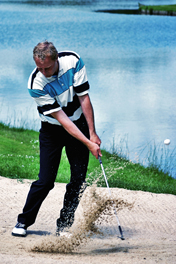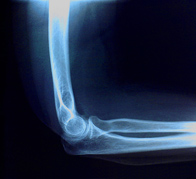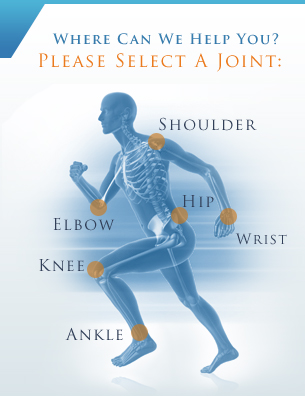
Elbow Arthroscopy
Elbow Arthroscopy
 Arthroscopy is a type of surgery that uses an arthroscope (thin fiber optic camera) to visualize the area to be operated on, as well as multiple small portals through which the surgeon's tools are manipulated. This procedure offers patients a relatively shorter recovery time as opposed to conventional "open" surgery. Much less soft tissue is injured during the operation, leaving less room for post-surgery complications.
Arthroscopy is a type of surgery that uses an arthroscope (thin fiber optic camera) to visualize the area to be operated on, as well as multiple small portals through which the surgeon's tools are manipulated. This procedure offers patients a relatively shorter recovery time as opposed to conventional "open" surgery. Much less soft tissue is injured during the operation, leaving less room for post-surgery complications.
Elbow arthroscopy is generally used for simple manipulations of the joint. For instance, a patient with a compound fracture may have multiple fragments of the bone removed through arthroscopic surgery, but a replacement prosthetic most likely would not fit through a portal. It is also very useful for arthritis, as tools capable of debriding can be inserted and used to smooth out the problematic bone surfaces in a minimally invasive manner.
The arthroscopic procedures are commonly used to confirm and examine abnormalities occurring in patients. This diagnostic use is helpful in ensuring that the patient will be recovering in the shortest amount of time possible.
However, arthroscopy is not nearly as prevalent in elbow surgery as it is in other joint specialties such as the knee. This is because the small structure of the joint requires very specialized training so the surgeon does not to disturb the multiple nerves crossing the joint. This forms an inherent risk in any procedure in the elbow, but more so in arthroscopy due to its nature of camera insertion.
 Golfer's Elbow Treatment
Golfer's Elbow Treatment
Medial epicondylitis, more commonly known as Golfer's Elbow, is a form of tendonitis that manifests on the inner side of the elbow. It is caused by the tendon in the forearm being stressed from constant use, but is not restricted to golfers; pitchers and even those not involved in sports can develop golfer's elbow.
Golfer's elbow is generally treated using analgesics and anti-inflammatory medication, as well as resting the elbow. However, professional athletes suffering from this condition may opt for more immediate relief in the form of glucocorticoid injections so as not to miss important career events. This treatment is risky because of the close proximity of the ulnar nerve to the affected area, damage to which could have severe ramifications.
Olecranon Bursitis Treatment
Olecranon bursitis, also called elbow bursitis, involves the development of a fluid-filled sac between the loose skin and bone of the elbow. This condition typically occurs after a fall onto the elbow, from an infection, or from prolonged pressure on the elbow, and may cause pain, swelling and limited motion of the elbow joint. Infected elbow bursitis may cause fevers, chills, sweats and redness.
Treatment for olecranon bursitis depends on the cause and severity of the condition, but may include applying ice, rest, fluid aspiration or antibiotics. Severe cases or those that do not respond to conservative treatment may require surgery to remove the bursa, with no damage to surrounding muscles, ligaments or joint structures.
Tommy John Surgery
 Tommy John surgery is a surgical procedure performed to repair torn ligaments in the elbow after a damaging injury to the area. This procedure, named for Los Angeles Dodgers pitcher Tommy John, can effectively relieve pain and instability in patients with a torn or damaged ulnar collateral ligament (UCL). A torn UCL commonly affects pitchers, and could even end a baseball player's career if severe enough.
Tommy John surgery is a surgical procedure performed to repair torn ligaments in the elbow after a damaging injury to the area. This procedure, named for Los Angeles Dodgers pitcher Tommy John, can effectively relieve pain and instability in patients with a torn or damaged ulnar collateral ligament (UCL). A torn UCL commonly affects pitchers, and could even end a baseball player's career if severe enough.
During Tommy John surgery, the tendon in the forearm is used to recreate the damaged ligament and restore stability to the joint. Most patients achieve successful results from this procedure, although it often requires a lengthy recovery period of 12 to 18 months before athletes can return to activity. Your surgeon will provide specific instructions regarding postoperative care and instructions for patients who have undergone Tommy John surgery.









